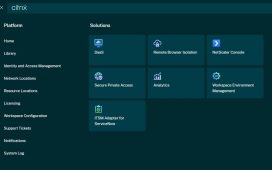The best time to prepare for exiting an Oracle Unlimited License Agreement is the day after the user organization signs up to one, according to software asset management experts.
Although Oracle says its ULA agreements are “generally considered an easy way for a large global organization to support business agility and value creation” and they could be a way of saving money in the short term, users should avoid simply rolling from one ULA to the next without reconsidering their licensing position.
And to do that, they need time to prepare, according to a panel of licensing advisors which included several former Oracle executives.
“The day you should start managing and planning your exit from the ULA is the day after you sign,” said Dan DeVenio, veep and chief client officer at Palisade.
He added: “Too many people wait until the last minute and then they run out of runway to benefit and maximize. Never too early to start is a common theme.”
Compliance, an advisory firm specializing in Oracle licensing, reckons the reason businesses should start planning early is that Oracle will consider usage a year prior to the ULA ending when negotiating licenses for individual products, which may turn out to be cheaper.
Speaking during a Palisade webinar on ULA planning and compliance, senior director for data analysis Luis Nunez said: “If you’re going to certify your ULA, there are things that you cannot do last minute. For example, Oracle Applications, the information you need will not be available unless you have been diligently gathering and preparing reports. That information has gone from E-Business Suite through normal operations. Unless you know and you take steps ahead of time, you’re not going to be ready to build your case and certify correctly.”
The reason Oracle users need to have the data ready is that Oracle does not have a set pricing policy on ULAs, the webinar heard.
DeVenio explained that Oracle takes a different approach to pricing ULAs compared to its other license agreements.
“In traditional pricing, there’s a price list, a product, a quantity and then they apply some discount. ULAs… are really priced by what Oracle wants to get out of the account, what they believe they can get out of the account. Usually it’s seven figures plus. Then they back into how they determine [how they are going to] approach it. There is some analysis of the projected use at any given client, which could have been based on past history and past purchases.”
He said larger companies will often end up with larger proposals, “but it is not as objective as people think.
“In reality, every time they present a ULA proposal, they present the alternative to buying ‘by the drink,’ as they say. So they come up with numbers that show if you buy this product with this discount, over the next three years, you’re going to spend a lot more than if you do this ULA, and then you can deploy all you want. It’s hard to predetermine what Oracle is going to come at you with, but they will always start with a large number and negotiate down,” DeVenio argued.
The Register has asked Oracle to comment on these points.
Last week, Oracle signaled intent to continue flexing the right to set its licensing strategy with a new Java SE Universal Subscription that it said is “a simple, low-cost monthly subscription that includes Java SE Licensing and Support for use on Desktops, Servers or Cloud deployments.”
Software licensing advisors pointed out that the new model could force businesses to pay tens of thousands of dollars more each month for running the same software. ®











